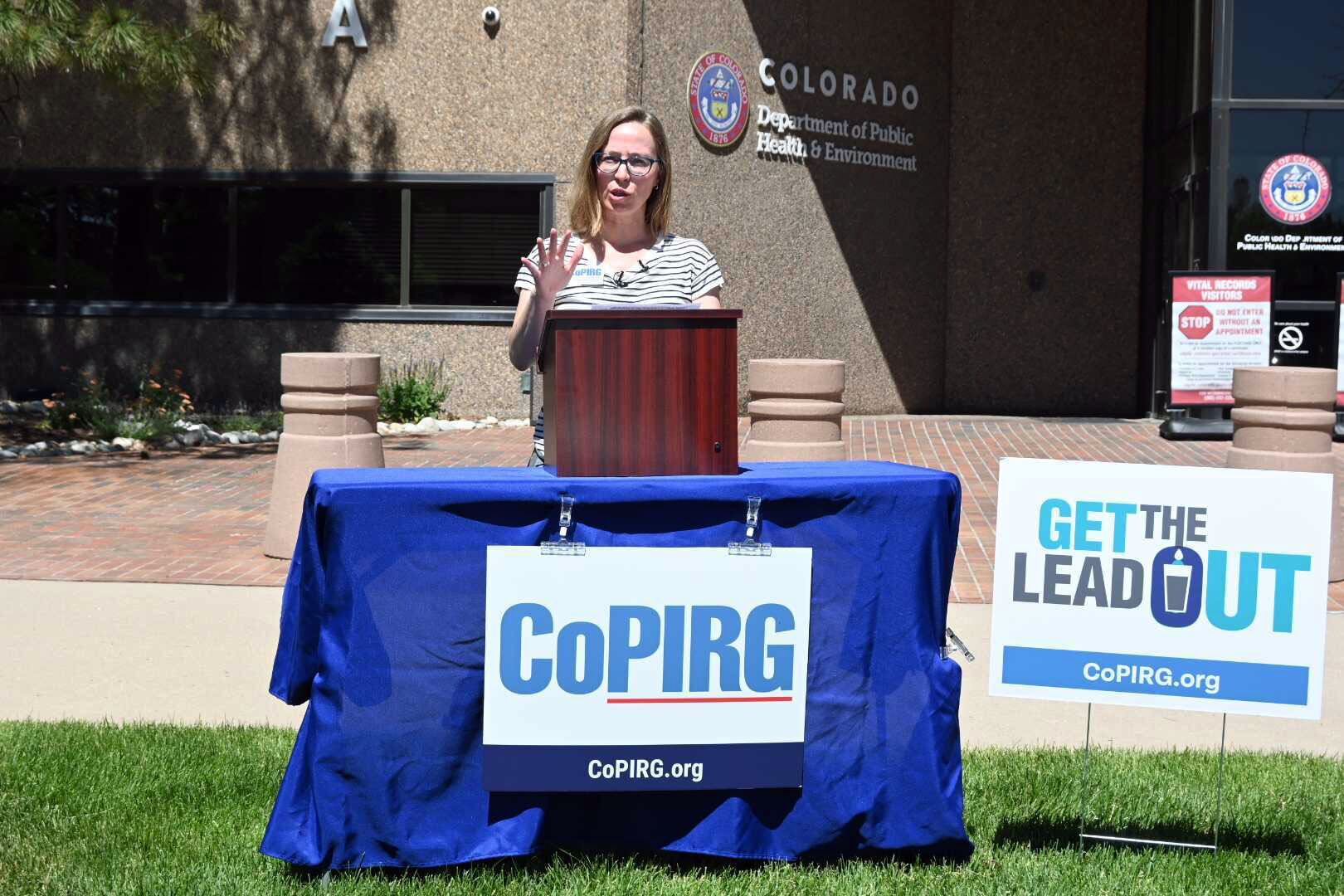Sign up for Chalkbeat Colorado’s free daily newsletter to get the latest reporting from us, plus curated news from other Colorado outlets, delivered to your inbox.
Nearly two-thirds of the roughly 2,200 sources of drinking water found roughly a year ago to have excessive lead contamination in Colorado’s 10 largest school districts still need to be fixed.
That’s according to a new Colorado Public Interest Research Group analysis of state data. The group found that since testing began last year, districts haven’t addressed the high lead levels of lead in the majority of water fixtures since May of last year.
The organization, which focuses on health and other public policy issues, released the analysis on Thursday using publicly available data from May 1 — a year since the state began requiring the testing of lead levels in Colorado schools and child care centers drinking sources.
“We would like to see them prioritize this to provide a safer, healthier learning environment,” said the group’s Kirsten Schatz, referring to schools. “Drinking water in schools should be of paramount importance, and we’d like to see them get that done.”
The analysis pulls from a statewide report required by a 2022 law that required schools to test water from sources like drinking foundations and make fixes if lead levels are 5 parts per billion or higher. The law set aside $21 million for testing and repairs. Schools and child care centers were required to test by May 31 of last year.
Lead is a dangerous neurotoxin that can cause learning disabilities and behavior problems in children, and even low levels of exposure can impact a child’s IQ. Although lead levels in American children have decreased dramatically since the 1970s, studies show many children still have detectable levels.
Studies have shown that 72% of Colorado children under 6 who were tested for lead had trace levels in their blood. However, many kids in Colorado have never been tested.
Schatz said the group focused on the state’s 10 largest districts because they educate the majority of Colorado’s students.
The analysis shows of the 2,201 water fixtures with contamination levels above 5 parts per billion and needing remediation, only 784 have been fixed since testing began in May 2023. That means 1,417 sources still need a fix to bring levels below the threshold, according to the analysis.
Schatz said the statewide school data shows some districts have taken action after they began reporting lead levels. The organization analyzed data from Denver, Adams 12, Aurora, Cherry Creek, Jefferson County, Academy, Douglas, Boulder, St. Vrain Valley, and Poudre school districts.
The report found Aurora Public Schools had the greatest need for remediation of contaminated drinking sources. But the Aurora district said the report is based on outdated data. Aurora subsequently provided Chalkbeat with updated data showing that it has replaced 189 of the 195 water fixtures flagged for remediation, tested them, and sent samples to the state. The final six are all from the same school where new service lines are being installed this month, a district spokesman said.
Out of the ten biggest districts, only St. Vrain Valley School District showed no fixtures needing remediation.
The analysis identified some extreme high levels of lead. One fixture at Eagleview Elementary School in Adams 12 tested as high as 4,500 parts per billion — or 900 times the state’s threshold. The fixture has since been replaced, according to the report.
Although the Colorado Public Interest Research Group’s analysis focuses on only the state’s largest districts, statewide data shows it’s an issue that also affects many smaller schools. The organization also created a resource guide for parents who want to analyze the statewide data for themselves.
Schatz said while she commends school districts for starting to take action, no student or parent should have to worry about lead in their water, and that there should be no lead in any source of drinking water. Her group recommends that parents worried about lead contamination send their students to schools with filtered water.
The American Academy of Pediatrics has set a safety threshold of 1 part per billion in drinking water. Most states have set the limit at 5 or 10 parts per billion.
“We know that there’s no safe level of lead exposure for people, and especially children who are still developing, because it causes so many health harms,” she said. “The most important thing is that we provide a safer and healthier learning environment.”
This article was updated to include data from Aurora Public Schools that contradicted the report’s findings.
Jason Gonzales is a reporter covering higher education and the Colorado legislature. Chalkbeat Colorado partners with Open Campus on higher education coverage. Contact Jason at jgonzales@chalkbeat.org.







